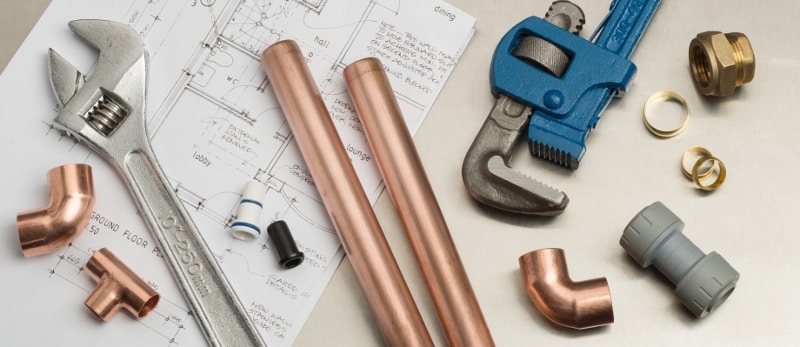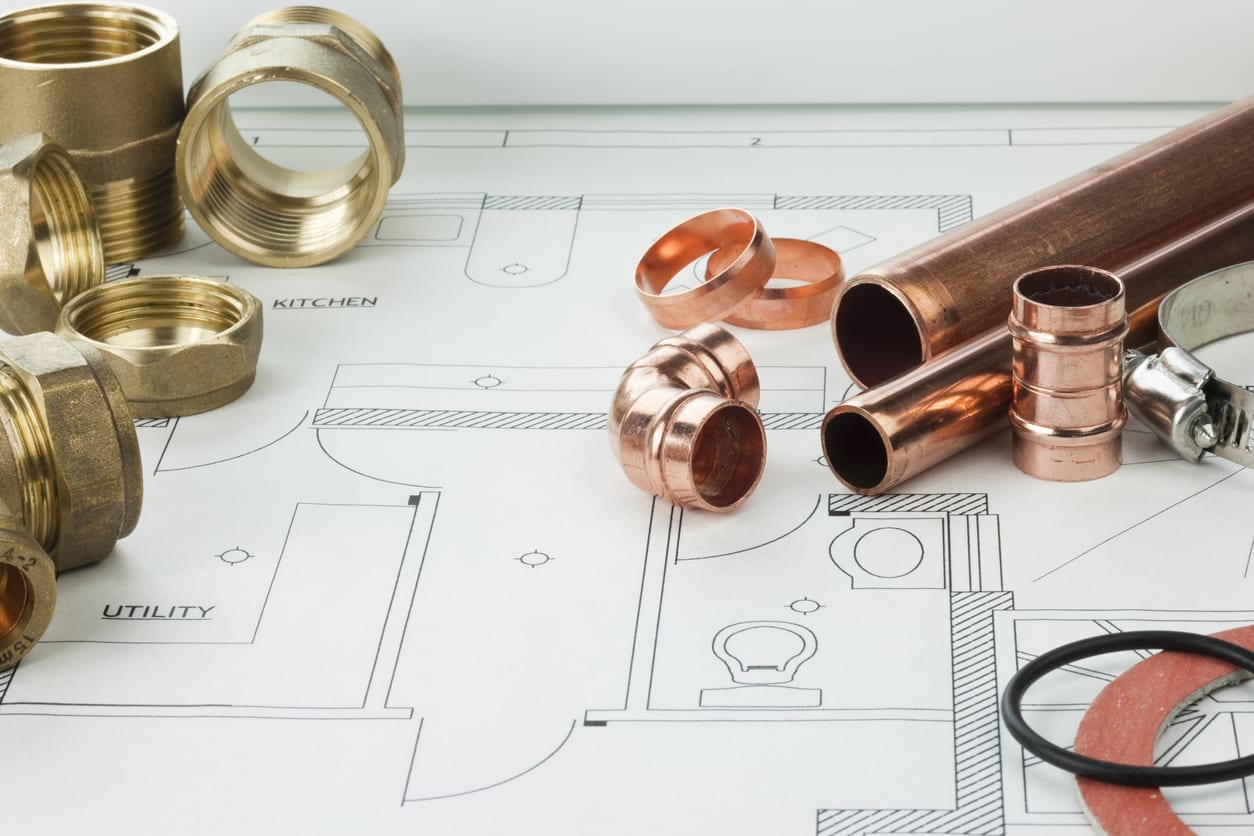The Basics of Your House's Plumbing System Anatomy
The Basics of Your House's Plumbing System Anatomy
Blog Article
On this page below yow will discover some exceptional guidance around Exploring Your Homes Plumbing Anatomy.

Understanding exactly how your home's pipes system functions is vital for every single homeowner. From providing tidy water for drinking, cooking, and showering to safely eliminating wastewater, a properly maintained plumbing system is important for your family members's health and comfort. In this detailed overview, we'll explore the elaborate network that composes your home's pipes and deal pointers on upkeep, upgrades, and taking care of usual concerns.
Intro
Your home's pipes system is greater than just a network of pipes; it's a complicated system that ensures you have access to clean water and efficient wastewater removal. Knowing its components and how they work together can help you avoid costly repairs and ensure everything runs smoothly.
Basic Elements of a Pipes System
Pipelines and Tubes
At the heart of your plumbing system are the pipes and tubing that carry water throughout your home. These can be made of numerous products such as copper, PVC, or PEX, each with its benefits in terms of sturdiness and cost-effectiveness.
Fixtures: Sinks, Toilets, Showers, etc.
Components like sinks, commodes, showers, and bath tubs are where water is utilized in your home. Understanding how these components attach to the plumbing system helps in diagnosing troubles and intending upgrades.
Shutoffs and Shut-off Points
Valves regulate the circulation of water in your plumbing system. Shut-off valves are critical throughout emergencies or when you need to make fixings, permitting you to isolate parts of the system without disrupting water circulation to the entire house.
Water System
Key Water Line
The main water line connects your home to the community water supply or an exclusive well. It's where water enters your home and is distributed to various components.
Water Meter and Pressure Regulator
The water meter actions your water usage, while a pressure regulatory authority guarantees that water flows at a secure pressure throughout your home's pipes system, stopping damages to pipelines and fixtures.
Cold Water vs. Warm water Lines
Understanding the difference between cold water lines, which supply water straight from the main, and warm water lines, which carry warmed water from the water heater, helps in fixing and planning for upgrades.
Water drainage System
Drain Piping and Traps
Drain pipes lug wastewater away from sinks, showers, and commodes to the drain or septic tank. Traps stop drain gases from entering your home and also catch debris that might cause blockages.
Ventilation Pipes
Air flow pipes allow air right into the drainage system, protecting against suction that could reduce drainage and create traps to empty. Correct ventilation is crucial for maintaining the honesty of your plumbing system.
Value of Correct Drain
Making certain proper drain protects against backups and water damages. Regularly cleaning up drains pipes and maintaining catches can protect against costly repair services and expand the life of your plumbing system.
Water Heating System
Kinds Of Hot Water Heater
Water heaters can be tankless or conventional tank-style. Tankless heating systems heat water on demand, while storage tanks save heated water for instant usage.
Updating Your Plumbing System
Reasons for Updating
Updating to water-efficient components or replacing old pipes can enhance water top quality, reduce water bills, and boost the worth of your home.
Modern Pipes Technologies and Their Benefits
Explore innovations like smart leak detectors, water-saving bathrooms, and energy-efficient hot water heater that can conserve money and reduce environmental effect.
Price Factors To Consider and ROI
Calculate the upfront expenses versus long-lasting cost savings when taking into consideration pipes upgrades. Many upgrades pay for themselves through decreased utility expenses and less repair services.
Just How Water Heaters Attach to the Pipes System
Understanding how water heaters connect to both the cold water supply and hot water distribution lines helps in identifying problems like inadequate hot water or leaks.
Maintenance Tips for Water Heaters
Regularly flushing your water heater to remove sediment, checking the temperature setups, and inspecting for leakages can expand its life-span and boost power performance.
Usual Pipes Problems
Leaks and Their Causes
Leaks can occur due to maturing pipelines, loosened installations, or high water stress. Dealing with leaks quickly avoids water damage and mold development.
Obstructions and Obstructions
Blockages in drains and toilets are often caused by purging non-flushable things or an accumulation of grease and hair. Using drainpipe displays and being mindful of what drops your drains can prevent clogs.
Signs of Pipes Troubles to Watch For
Low water stress, slow-moving drains, foul odors, or unusually high water bills are indicators of prospective plumbing problems that must be dealt with quickly.
Pipes Upkeep Tips
Regular Inspections and Checks
Set up annual pipes assessments to catch issues early. Try to find indications of leakages, deterioration, or mineral accumulation in taps and showerheads.
Do It Yourself Maintenance Tasks
Simple jobs like cleaning tap aerators, checking for toilet leaks using color tablets, or shielding revealed pipelines in cold climates can prevent significant plumbing problems.
When to Call a Professional Plumbing Professional
Know when a plumbing concern needs specialist know-how. Attempting complicated repairs without appropriate knowledge can result in even more damage and greater repair work expenses.
Tips for Reducing Water Usage
Straightforward practices like dealing with leaks quickly, taking much shorter showers, and running complete loads of washing and recipes can conserve water and lower your energy bills.
Eco-Friendly Pipes Options
Consider sustainable pipes materials like bamboo for floor covering, which is durable and eco-friendly, or recycled glass for counter tops.
Emergency Readiness
Steps to Take During a Plumbing Emergency situation
Know where your shut-off valves are located and just how to turn off the water system in case of a ruptured pipe or significant leakage.
Importance of Having Emergency Situation Get In Touches With Convenient
Keep get in touch with details for local plumbing technicians or emergency situation solutions readily available for quick feedback during a plumbing dilemma.
Ecological Impact and Conservation
Water-Saving Components and Devices
Installing low-flow faucets, showerheads, and toilets can considerably decrease water usage without compromising efficiency.
Do It Yourself Emergency Situation Fixes (When Relevant).
Temporary fixes like using duct tape to spot a dripping pipeline or positioning a bucket under a dripping faucet can lessen damages till a specialist plumber arrives.
Final thought.
Comprehending the composition of your home's plumbing system empowers you to maintain it efficiently, saving time and money on repair work. By following regular maintenance routines and staying informed about modern plumbing technologies, you can ensure your plumbing system operates efficiently for years to come.
HOW YOUR PLUMBING SYSTEM WORKS
Which Pipes Do What?
Blue lines = fresh water supply entering the building Red lines = hot water supply entering the building Grey lines = pipes carrying waste away from the building and venting pipes carrying gases away from the building (through the roof) YOUR MAIN PLUMBING SYSTEMS
There are two main plumbing systems that support your home s basic plumbing needs one that brings clean water into your home, and one that sends dirty water away from your home. Connected to the toilet, bath, shower, and other faucets in your home, these two systems keep your water flowing in the right directions.
ACCESSING FRESH WATER
Fresh and clean water is brought into your home through the main water supply line . Filtered through one pipe, this water is pressured to flow into the various fixtures in your home at any given time.
This water can be sourced from a well located on your property, a pond or river (mostly cottages), or, as in most cases, from the city s municipal water treatment centre. However, it is important to note that water that is untreated, such as the water siphoned from ponds or rivers, may not be safe to drink. Personal water supplies always need to be treated for hardness and contaminants before consumed.
MUNICIPAL WATER SUPPLIES
Improve taste and odour Remove sediment Eliminate hardness Reduce chlorine COLD WATER SUPPLY VS. HOT WATER SUPPLY
Cold water flows into your home or building through the service line, which then distributes hot or cold water to your fixtures. This line is most commonly run through a central column that runs floor to floor. Hot water runs in short and straight pipes as the longer the pipeline, the more heat that will be lost in the transfer. Having shorter pipes also allows residents to access hot water more quickly.
WASTE WATER SYSTEM
Your wastewater system is divided into two parts pipes that send wastewater away from your home and venting pipes that send sewer gas away from your home. Sewage water travels through pipes that flush the water and waste towards local sewers that are operated and managed by your city or town. Most sewer systems rely on gravity to move the wastewater to where it needs to go.
The further away from your toilet or sink, the larger wastewater pipes become. This allows for waste to be disposed of from various parts of your home or business at once without pipe blockages. The angle and flow of these pipes are also essential for keeping your waste pipes clear of build up.
https://harrisplumbing.ca/how-your-home-plumbing-system-works/

We had been made aware of that article on Understanding Your Home's Plumbing Anatomy through a friend on our other site. Please take the time to distribute this blog if you liked it. I enjoy reading our article about Understanding Your Home's Plumbing Anatomy.
Schedule Report this page